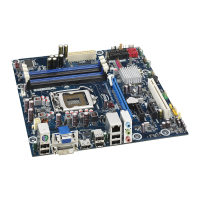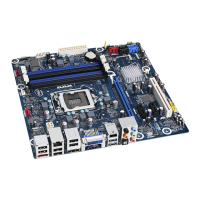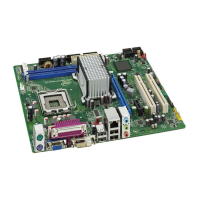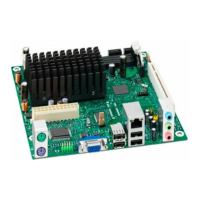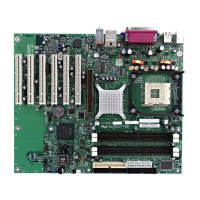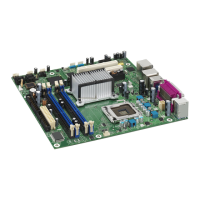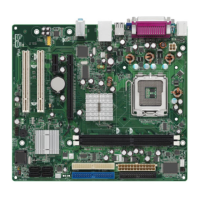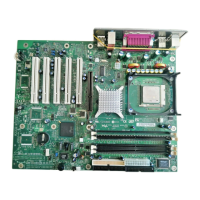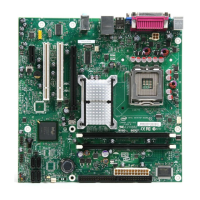Intel® 3210 and 3200 Chipset Thermal/Mechanical Design Guide 35
Reference Thermal Solution
6 Reference Thermal Solution
The design strategy of the reference thermal solution for the Intel
®
3210 and 3200
Chipset uses backing plate stiffness/design to show significant improvement in MB
strain and BGA forces. The thermal interface material and extrusion design
requirements are being evaluated for changes necessary to meet the Intel
®
3210 and
3200 Chipset thermal requirements. The Keep Out Zone (KOZ) will have the
requirements of heatsink mounting hole with Intel
®
3210 and 3200 Chipset. Refer to
Figure B-2 and Figure B-3 for details. Other chipset components may or may not need
attached thermal solutions, depending on the specific system local-ambient operating
conditions. For information on the Intel
®
ICH9, refer to thermal specification in the
Intel
®
I/O Controller Hub9 (ICH9) Thermal Design Guidelines.
6.1 Operating Environment
The reference thermal solution will be designed assuming a maximum local-ambient
temperature of 55 °C. The minimum recommended airflow velocity through the cross-
section of the heatsink fins is 350 linear feet per minute (lfm) for 1U system and 450
linear feet per minute (lfm) for 2U+ system. The approaching airflow temperature is
assumed to be equal to the local-ambient temperature. The thermal designer must
carefully select the location to measure airflow to obtain an accurate estimate. These
local-ambient conditions are based on a 35 °C external-ambient temperature at sea
level. (External-ambient refers to the environment external to the system.)
6.2 Heatsink Performance
Figure 6-1 depicts the measured thermal performance of the reference thermal solution
versus approach air velocity. Since this data was measured at sea level, a correction
factor would be required to estimate thermal performance at other altitudes.

